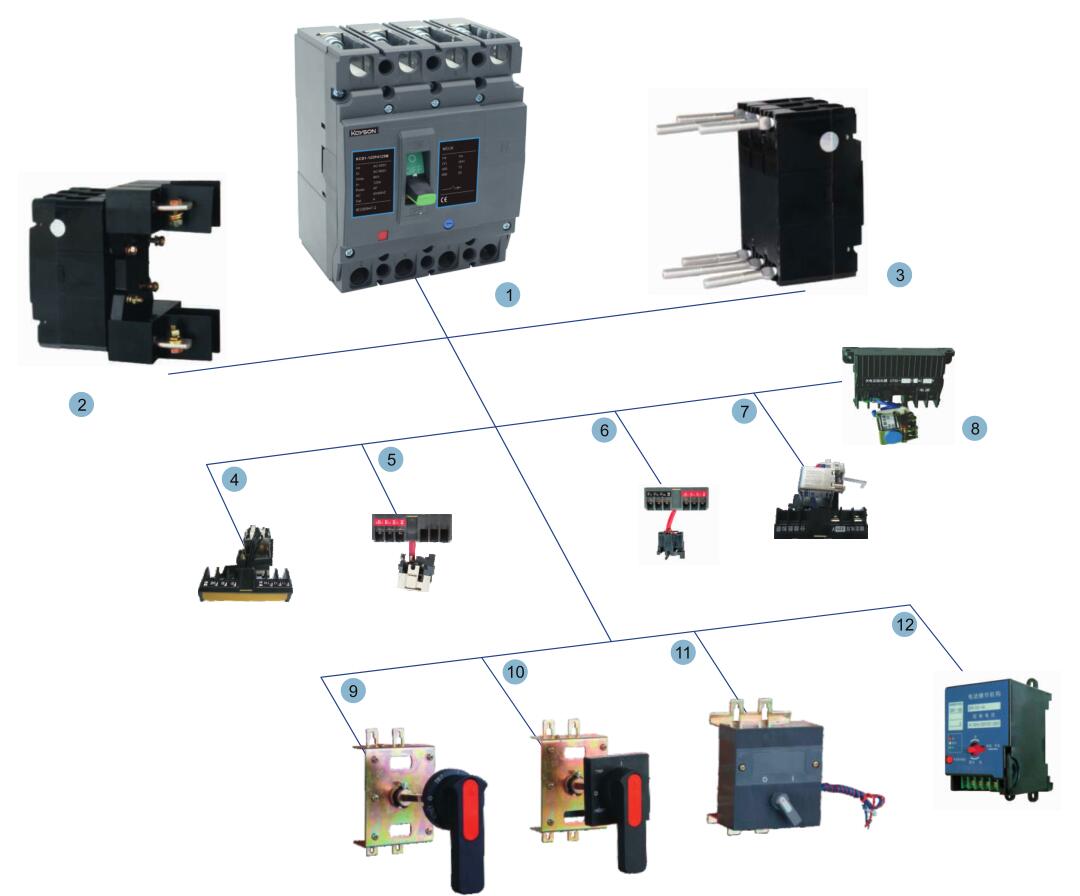Moulded Case Circuit Breaker
Series KCB1
Product Overview

1. Body
2.Plug-in connection
3. Rear panel Connection
4. Auxiliary Contact
5. Alarm contact
6.Auxiliary contact and Alarm contact
7. Shunt Release
8.Under-voltage release
9. Rotary handle operating mechanism
10. Rotary handle operating mechanism
11.Electromagnetic operating mechanism
12.Electric motor operating mechanism
Appearance

Characteristic
Incoming and outgoing circuit breakers in distribution systems
Switching and protection devices for motors, transformers and capacitors
Disconnector units with features for stopping and switching off in an emergency in conjunction with lockable rotary
operating mechanisms and terminal covers.
Available in the following versions :
System protection: the overload and short-circuit releases are designed for the protection of cables, leads and
non-motor loads
Motor protection: the overload and short-circuit releases are designed for optimized protection and direct-on-line
starting of induction squirrel-cage motors. The circuit breakers for motor protection are susceptible to phase failure
and feature an adjustable trip class. The electronic releases operate with a microprocessor
Rated to 800A,
High breaking capacity.
Instruction of type code

Technical Parameter


Ordering information




Accessories
Shunt Release
In 70%-100% of the rated voltage, the breaker can work normally

Under-voltage release
When voltage is 35%-70% of rated voltage, the under voltage release should make the breaker tripping off.
When voltage is more than 85-110% of rated voltage, the under voltage release should assure the breaker working
normally
When votlage is less than 35% of rated voltage, the under voltage release should prevent switching on.

Accessories
Auxiliary contact
Indication of contaccting status

Alarm contact

Tripping Characteristic
For power distribution






Release type codes of accessories


Outline and installation dimensions

